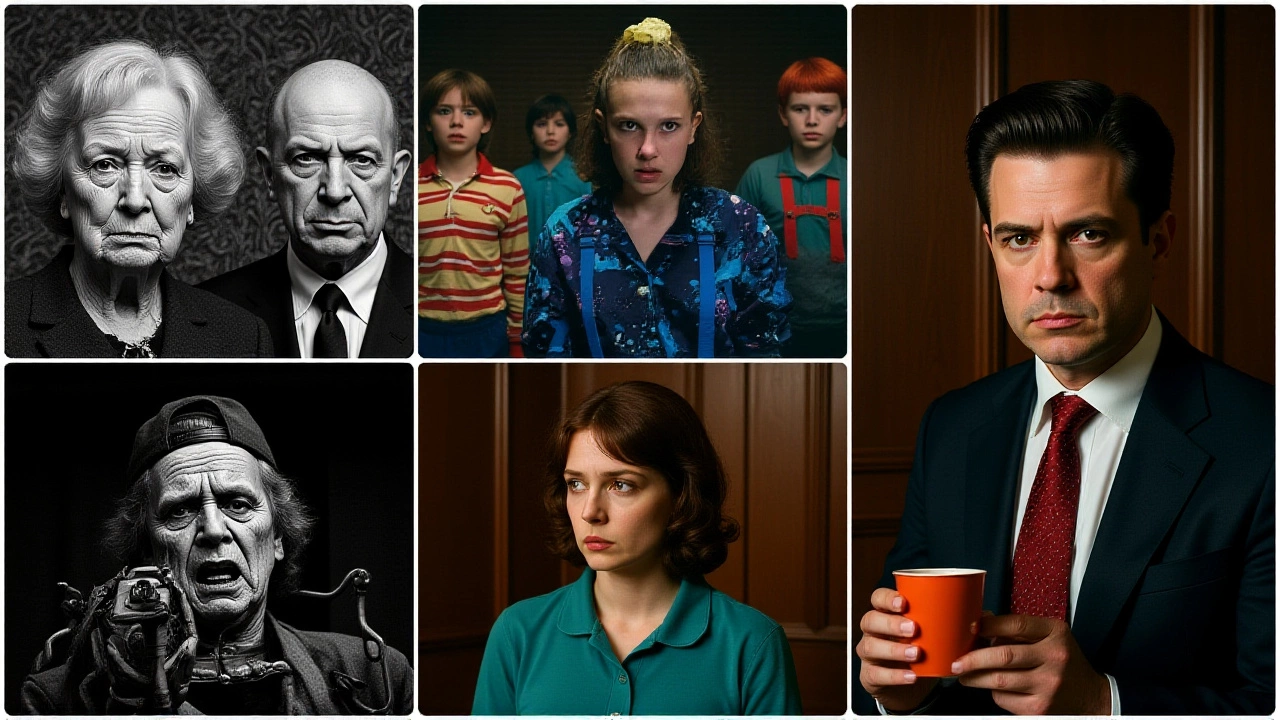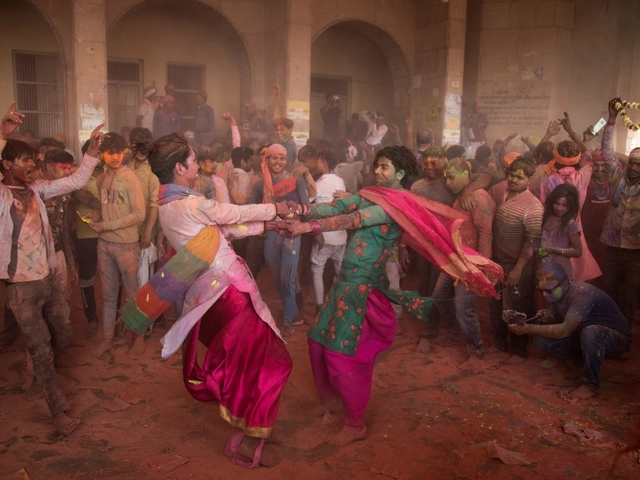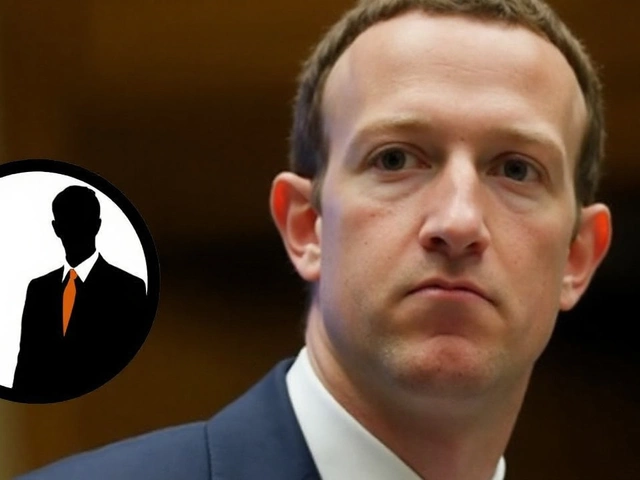Hollywood’s Timeless Horror Shows and 2025’s Darkest Releases Are Streaming Now
When Netflix dropped Stranger Things Season 5 in September 2025, fans didn’t just binge—they held their breath. The show’s final season, steeped in 1980s nostalgia and Stephen King-level dread, proved once again that horror doesn’t need jump scares to haunt you. It’s the silence between screams. The flickering lights. The voice whispering from the Upside Down. And it’s not alone. Across Peacock, HBO, and other platforms, a new wave of horror is reshaping how we experience fear—on our terms, in our living rooms, at 2 a.m.
Why These Horror Shows Still Haunt Us
It’s not just about monsters. It’s about family. Grief. The things we bury and the things that refuse to stay buried. The Haunting of Hill House didn’t just scare viewers—it made them cry. The Crain siblings’ trauma, rendered in hauntingly beautiful cinematography, turned a haunted house story into a meditation on loss. That’s why, even five years after its 2018 debut, it still tops ‘Best Horror Series’ lists. Same with Sharp Objects—a slow-burn psychological descent into abuse and silence, where the real horror isn’t the ghost in the attic, but the mother who made you believe you deserved it.
What makes these shows timeless isn’t the gore—it’s the truth beneath it. Horror, at its best, reflects our deepest fears: of being forgotten, of losing control, of the people we love turning into strangers. And in 2025, that truth feels more urgent than ever.
2025’s Must-Watch Horror Releases
This year, Hollywood didn’t just deliver scares—it delivered symphonies of dread.
- Stranger Things Season 5 (Netflix): Finale of the decade-defining series. Set in Hawkins, Indiana, with Finn Wolfhard, Millie Bobby Brown, and David Harbour leading the cast. The Demogorgon’s shadow lingers—but so do the ghosts of childhood.
- Crystal Lake (Peacock): A fresh take on slasher tropes, with Frank Whaley, Emily Meade, and Jackie Woodburne trapped in a lakeside town where the past won’t let go. Think Friday the 13th meets Twin Peaks.
- It: Welcome to Derry (HBO): A prequel to Stephen King’s masterpiece, this series dives into the 1960s origins of Pennywise. The town’s evil isn’t new—it’s just been waiting. And now, it’s hungry again.
- Final Destination: Bloodlines: The franchise’s ninth installment, and its most inventive yet. Death doesn’t just come—it choreographs. A group of survivors who cheated fate find themselves in a Rube Goldberg machine of doom. One scene—a collapsing bridge made of mirrors—left audiences speechless.
- 28 Years Later: Danny Boyle’s sequel to his 2002 cult classic returns to a world still rotting from the rage virus. This time, the survivors aren’t fighting zombies—they’re fighting the memory of what they became.
- Weapons: A small-town nightmare where, one night, everyone picks up a weapon—and no one remembers why. Shot in grim, handheld realism, it feels less like fiction and more like a warning.

TV’s Return of the Fear Factor
While streaming dominates, traditional TV isn’t backing down. Colors TV is launching Chetki, a folk-horror series rooted in rural Indian mythology—think haunted forests and vengeful spirits with a modern twist. Meanwhile, Zee TV is reviving its iconic Zee Horror Show, a nostalgic blast from the early 2000s that terrified a generation with its low-budget chills and eerie sound design. Sony TV has quietly dropped a teaser for a new, unnamed horror series—rumored to be set in a derelict asylum in Kashmir, with footage that reportedly made test audiences scream out loud.
What’s Next? The Horror Landscape in 2026
By late 2025, the genre’s evolution is undeniable. Horror is no longer just about monsters under the bed. It’s about algorithms that know your fears. About climate anxiety manifesting as sentient storms. About AI-generated nightmares that feel too real. The upcoming Sisu: Road to Revenge (Nov 21) and Wicked: For Good (Nov 21) hint at this shift—fantasy meets psychological horror, where magic has consequences and vengeance is a curse.
Even Zootopia 2 (Nov 28), though marketed as a family comedy, carries subtle undertones of societal collapse and institutional betrayal. Is it horror? Maybe not on the surface. But in a world where trust is crumbling, even cartoon rabbits can become symbols of dread.

Why This Matters
We’re not just watching horror—we’re using it to process what’s happening around us. Pandemics. Political unrest. The erosion of truth. Horror gives us a safe space to scream. To feel something real in a world that feels increasingly unreal. These shows and films aren’t entertainment. They’re therapy.
And if you’re not watching them? You’re missing the cultural pulse of 2025.
Frequently Asked Questions
Which horror series from 2025 is considered the most psychologically intense?
Crystal Lake on Peacock stands out for its slow-burn psychological tension, blending slasher tropes with deep character trauma. Unlike jump-scare-heavy shows, it forces viewers to sit with grief, guilt, and the weight of secrets—making its scares linger long after the credits roll. Critics have compared it to Sharp Objects and The Haunting of Hill House for its emotional depth.
Are any of these horror shows based on true stories?
None are directly based on true events, but many draw from real fears. Weapons was inspired by real-life mass incidents where communities turned on each other during crises. 28 Years Later echoes pandemic-era isolation and societal breakdown. Even Stranger Things borrows from Cold War paranoia and government experiments on children—historical truths twisted into fiction.
Where can I watch these horror shows and movies?
Stranger Things and Crystal Lake are on Netflix and Peacock, respectively. It: Welcome to Derry streams on HBO Max. Final Destination: Bloodlines, 28 Years Later, and Weapons are available on Amazon Prime Video and Apple TV+. Indian series like Chetki and Zee Horror Show air on Colors TV and Zee TV, with episodes available on Voot and ZEE5.
Why is horror so popular in 2025?
With rising global instability, economic anxiety, and digital overload, horror offers catharsis. It lets us confront chaos in controlled doses. Studies show viewers report feeling more in control after watching horror—they’ve faced the worst-case scenario, and survived. That’s why 2025’s horror slate is the most diverse and emotionally complex in decades.
Is there a horror movie in 2025 that’s particularly controversial?
Weapons sparked debate after its premiere at Sundance for its unflinching portrayal of communal violence. Some critics called it a powerful allegory for polarization; others accused it of glorifying chaos. The director, however, insists it’s a mirror: "We didn’t invent the violence. We just showed what’s already in the room."
What’s the most underrated horror show of 2025?
Sisu: Road to Revenge flew under the radar but is already being called a genre-defining film. Blending Finnish folklore with brutal revenge tropes, it’s less about ghosts and more about inherited trauma. Its final 15 minutes—a silent, blood-soaked walk through a frozen forest—have been compared to the ending of The Witch and Hereditary. If you only watch one horror film this year, make it this one.




